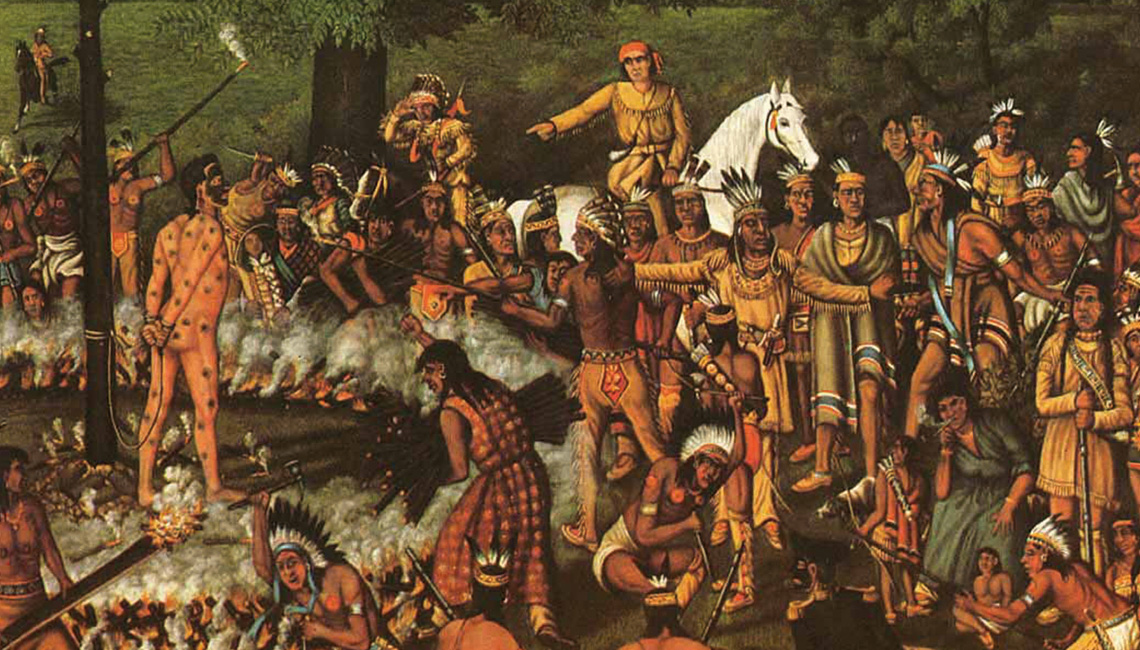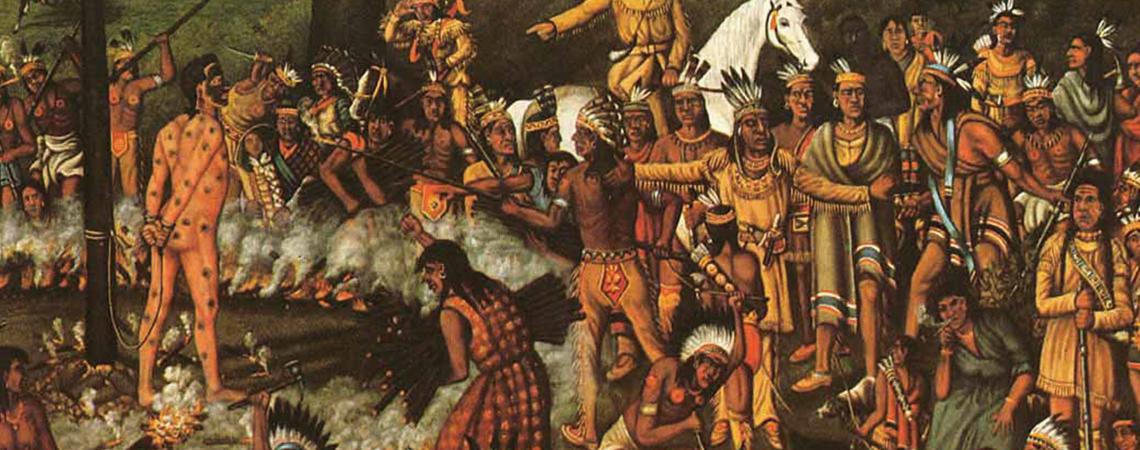One of the most infamous incidents in all of early Ohio history occurred 241 years ago this month, on June 11, 1782, when Col. William Crawford of the fledgling U.S. Army was burned at the stake by Native American locals out for revenge.
Eastern Woodlands tribes rarely killed captives in such a manner, reserving this worst of tortures and deaths for their greatest of enemies. In Crawford’s case, however, the Natives killed the wrong man. And they knew it…
Detail from an artist’s rendering of the execution of Col. William Crawford.
The story begins several months earlier, in March 1782, when 96 members of the Delaware tribe, who had converted to Christianity, were rounded up, massacred, and burned along with their entire village of Gnadenhutten (meaning huts, or tents, of grace) along the Tuscarawas River by Col. David Williamson and his contingent of frontier militia.

Not surprisingly, when the Delaware Nation heard of the murders, its population was furious and swore vengeance. After the Moravian Massacre (as it came to be known because the Natives had been converted to Christianity by Moravian missionaries), Williamson and his men returned to Fort Pitt, which one day would become Pittsburgh.
Soon thereafter, some 500 Pennsylvania militiamen volunteered to return to the Ohio country and continue the campaign to punish tribes for their ongoing depredations on white settlers and frontier forts south of the Ohio River. Williamson and Crawford were both considered to lead the contingent. Crawford, 60 years old and a seasoned military leader of the American Revolution, had come out of retirement to join the campaign and was elected by a handful of votes; Williamson would be his second-in-command.
The Army headed northwest on horses, moving toward Natives’ towns located along the headwaters of the Sandusky River. The area was mainly prairie land, with copses of scattered trees. During the early afternoon of June 4, the advance guard was fired upon by tribesmen hiding in the tall grasses.
Not only had the frontiersmen not surprised their targets, as they had hoped, but they found themselves outnumbered 2-to-1. The ensuing Battle of Sandusky raged over a period of two days, resulting in an eventual rout of the militia. Crawford was captured during the chaotic retreat, and many other militiamen were either captured or killed.
The irony of the battle is that Williamson escaped without injury. Knowing he had been responsible for the deaths of the 96 innocent Moravian Delawares, Native combatants would have liked nothing better than to have captured Williamson, as well as Crawford. As they felt someone needed to be held accountable for the Gnadenhutten Massacre, Crawford became the scapegoat.
Chief Wingenund of the Delaware Tribe reportedly told Crawford coldly, “Now, you must pay for Williamson’s crime, because you have not attended to the Indian principle that as good and evil cannot dwell together in the same heart, so a good man ought not to go into evil company.”
The Delaware took Crawford back to their encampment, stripped him, and tied his hands behind his back. Crawford was then tethered to a large wooden post where the Natives lit a large, circular fire around him. The scene is too gruesome to describe here; suffice it to say he died several hours later.
A monument to Col. William Crawford stands today near the small town of Carey in Wyandot County. Adjacent Crawford County is named for him, as is the local Colonel Crawford School District. The site of the Moravian Massacre, Gnadenhutten, is on the U.S. National Register of Historic Places.











